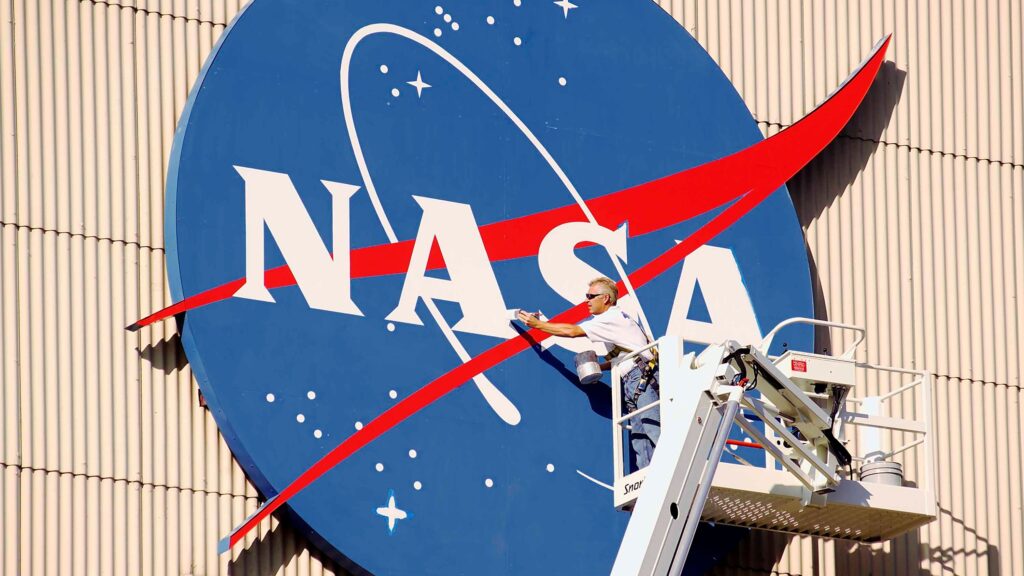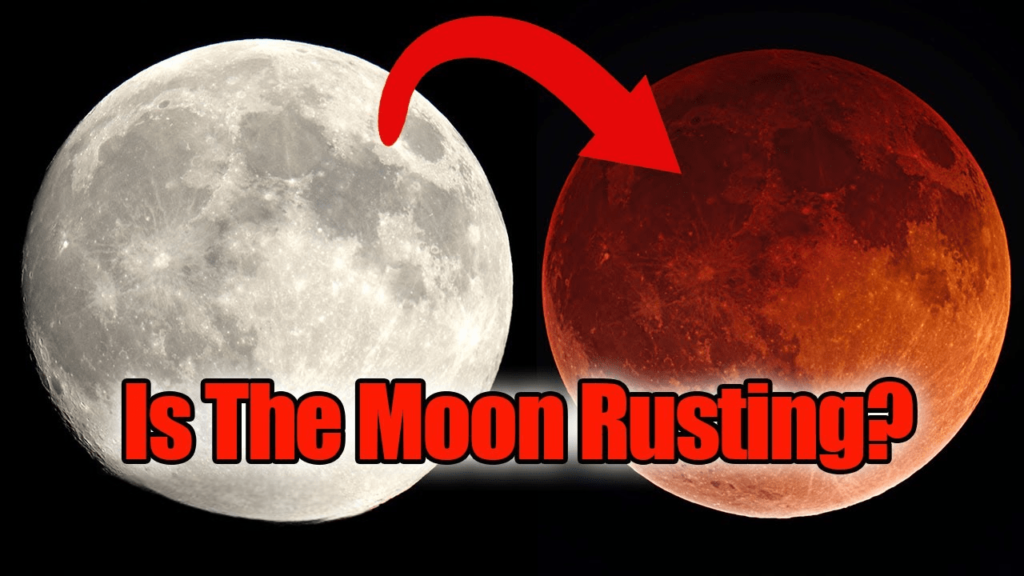Is the Moon Rusting? Shocking Truths Uncovered

What Does Rusting Mean in Space?
Is the moon rusting? Rusting, or oxidation, typically occurs when iron reacts with oxygen and water. On Earth, this is a common process due to the presence of moisture and abundant oxygen in the atmosphere. However, in space, rusting is far less common. Space lacks a significant atmosphere and water supply, which makes the idea of rusting in such an environment seem unlikely. Despite this, scientists have made a surprising discovery—there is evidence that suggests the moon is rusting. But how could a process that relies on oxygen and moisture be occurring on the moon? The question “is the moon rusting” has intrigued scientists, leading to further research and analysis.
Why Is the Moon Rusting?
The question “is the moon rusting” has puzzled researchers since they found traces of hematite, a form of iron oxide, on the lunar surface. Hematite forms when iron reacts with oxygen in the presence of water. But the moon has no atmosphere to provide oxygen, nor does it have liquid water on its surface. Researchers believe that Earth’s atmosphere could play a role in this process. Solar wind, carrying traces of oxygen from Earth, may be reaching the moon, allowing for limited oxidation to occur. The discovery raises intriguing questions about how Earth’s influence extends far beyond its immediate vicinity and whether this truly means that the moon is rusting.
Earth’s Role in the Moon’s Rusting Process
One of the key explanations for the question “is the moon rusting” involves Earth’s magnetic field and its oxygen-rich atmosphere. During certain times of the lunar cycle, Earth’s magnetotail—a part of its magnetic field—extends to the moon. This phenomenon can trap oxygen from Earth and transport it over long distances through the solar wind. When this oxygen reaches the moon’s surface, it may react with iron present in lunar soil, leading to the formation of rust-like compounds such as hematite. This interaction between Earth and the moon suggests a surprising connection that challenges previous assumptions about space environments and supports the idea that the moon might indeed be rusting.
Water on the Moon: A Surprising Contributor?
Another factor that might contribute to the question “is the moon rusting” is the presence of water ice in its polar regions. While liquid water is absent on the lunar surface, frozen water exists in the shadowed craters of the moon’s poles. During lunar days, tiny amounts of water molecules could be released and interact with iron-rich minerals. When these molecules encounter oxygen carried by Earth’s magnetotail, they could facilitate the formation of rust. This theory suggests that even the small traces of water on the moon could be playing a significant role in the rusting process, adding another layer of mystery to the question of whether the moon is rusting.

What Did the Discovery of Hematite Reveal?
The discovery of hematite on the moon was made by analyzing data from the Moon Mineralogy Mapper (M3), an instrument aboard India’s Chandrayaan-1 spacecraft. M3 detected the signature of hematite in areas where it was least expected. Unlike the gray iron-rich material that dominates most of the lunar surface, hematite appeared in patches on the side of the moon facing Earth. Scientists were surprised to find evidence of this iron oxide in areas where conditions seemed unsuitable for rusting. This raised the question of whether other unique processes could be contributing to lunar rusting. But it certainly deepened the inquiry: is the moon rusting more than previously thought?
How Solar Winds Affect the Rusting Process
Solar winds generally consist of charged particles from the sun that bombard the moon’s surface, which should make oxidation difficult. In theory, these winds would strip away any exposed oxygen, making rusting almost impossible. However, during certain phases, Earth’s magnetotail shields parts of the moon from solar winds, creating a temporary environment where rusting could occur. This brief period, when the moon is protected from the harsh solar particles, allows for oxygen from Earth to interact with lunar minerals. It is during these moments that the moon’s surface might undergo slow oxidation, giving rise to the rusting phenomenon, which raises the critical question: is the moon rusting due to Earth’s protection?
Is Rust on the Moon a Threat or a Curiosity?
The discovery of rust on the moon is not seen as an immediate threat. It is more of a scientific curiosity that helps researchers understand how complex interactions between Earth and its lunar companion can take place. The rusting process on the moon is extremely slow due to the lack of atmosphere and liquid water, making it unlikely to affect lunar exploration efforts significantly. However, it does prompt further investigations into how Earth’s natural environment influences space beyond its boundaries. Understanding these interactions can provide valuable insights into space weathering and other processes that impact planetary bodies, keeping the question “is the moon rusting” at the forefront of lunar studies.
What This Means for Future Lunar Missions
For future missions to the moon, understanding the rusting process could help scientists better plan for long-term lunar exploration. The presence of rusting agents like oxygen and water molecules means that lunar soil and its changes over time need to be studied closely. It could influence how structures are built on the moon’s surface and how resources are managed for future human settlements. Additionally, this discovery could guide scientists in studying similar processes on other planetary bodies, like Mars, where the presence of hematite has also been detected. It opens new avenues for exploring how materials behave in space environments, all while addressing the question, “is the moon rusting?”
Is the Moon Rusting Proof of Earth’s Influence in Space?
The surprising answer to “is the moon rusting” highlights Earth’s profound influence even beyond its atmosphere. The oxygen carried to the moon through the magnetotail demonstrates a direct link between Earth and its natural satellite. This phenomenon shows that Earth’s environment does not exist in isolation but has a subtle impact on its cosmic neighbors. For scientists, it is a reminder of how interconnected our solar system can be. It emphasizes the need to study not only celestial bodies in isolation but also their interactions with each other, which can yield surprising and valuable discoveries. This interconnectedness may just be the key to understanding why the moon appears to be rusting.
Conclusion: A Rusty Revelation About the Moon
The discovery of rust on the moon raises intriguing questions about our understanding of space. It reveals that even in an environment as hostile as the lunar surface, Earth’s influence can reach and create surprising effects. While rusting on the moon is not likely to have major implications, it provides a unique perspective on how planets and their satellites interact. It challenges assumptions and opens the door to further exploration of how space environments evolve. The question of “is the moon rusting” has turned into a fascinating exploration of Earth’s unexpected connection to its celestial neighbor, expanding our view of the universe and offering new insights into cosmic phenomena.













